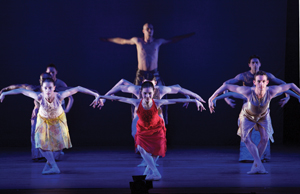A greater focus on audience development can increase revenue and justify public funding for the arts, says David Brownlee.

Audiences UK is the new name for the national network of Audience Development Agencies (ADAs). We’ve changed our name and relaunched to achieve a greater national profile and awareness of good audience development practice. In the challenging economic times ahead, we believe that if cultural organisations place a greater focus on developing audiences, it will help to justify the importance of public funding and an organisation’s bottom line through increasing earned income. Our strength is in our 12 members, who all work closely with individual cultural organisations to help them grow their customer base and reach. There are plenty of practical examples of the way ADAs have done this, but let me give you just one.
As part of project commissioned by the Scottish Touring Theatres Consortium (STTC), Scottish Ballet set a challenge to Glasgow Grows Audiences (GGA): to create a strategy that would encourage audience growth and retention for dance in Glasgow, Edinburgh, Aberdeen and Inverness, the results of which would be shared with STTC members. As well as a feasibility study carried out by Scottish Ballet, GGA undertook research in the form of focus groups, desk research, audience profiling, box office sales analysis and a competitor analysis. A phased Audience Development plan was created, focusing on attracting and retaining attenders for mixed programme performances. It also included recommendations on how current communications with ticket-buyers could be enhanced by taking a more segmented approach. In phase one, quick wins were achieved at large-scale venues in Glasgow, Edinburgh and Aberdeen. The overall income and attendance targets were surpassed, direct mail campaigns generated significant returns on investment, programme sales in one venue surpassed targets by more than 25% and unique visits to the Scottish Ballet website increased by 30%. Previously the vast majority of bookers mainly purchased two tickets. Anyone buying tickets for a larger party was of particular interest within the campaign. Response rates to direct mail campaigns and return on financial investment by this group proved to be much higher than anticipated which led Scottish Ballet to redefine how it viewed ‘group bookers’ in the future. Phase two focused on audience loyalty and revenue generation at His Majesty’s Theatre in Aberdeen. Not only had ticket sales and revenue increased between phase one and phase two, but more people booked these consecutive events than had done for comparable events in previous seasons. The dancers noticed the change in the Aberdeen audience response from season to season: “The audiences were bigger, more animated and noisier – as in louder applause and even shouting. It was not the normal response from the Aberdeen audience; they are always welcoming, warm and receptive but not so vocal or animated.”
David Brownlee is Chief Executive of Audiences UK, which aims to help great arts find and keep great



